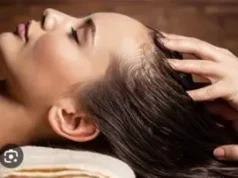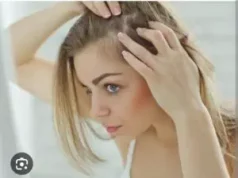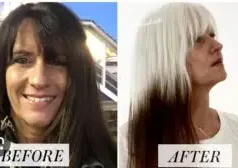Are you seeking for strategies to accelerate hair growth? If so, you’ve undoubtedly spent a lot of time researching solutions online.
The truth is that, despite the abundance of herbal treatments offering to assist you in achieving your hair growth objectives, very few treatments are as effective as African herbs.
Are you curious to find out more? The remarkable African plants you can use to promote hair development and maximise length retention are described in this article. You can achieve your most ambitious hair growth goals in this manner.
African Herbs for Hair Growth
There are several African herbs that are believed to promote hair growth. Some of them include:
- Aloe Vera: Aloe vera has moisturizing properties that can improve scalp health and stimulate hair growth.
- Fenugreek: Fenugreek seeds are rich in proteins and nicotinic acid, which are known to strengthen hair and promote growth.
- Amla (Indian Gooseberry): Although not exclusively African, amla is used in some African regions. It is rich in vitamin C and antioxidants, which can enhance hair health.
- Hibiscus: Hibiscus flowers and leaves are used in hair treatments in many African countries. They are believed to prevent hair loss and encourage growth.
- Neem: Neem leaves have antibacterial and antifungal properties, which can help with scalp issues that may hinder hair growth.
- Moringa: Moringa leaves are nutrient-rich and contain vitamins and minerals that promote hair growth.
Remember that while these herbs are often used in traditional remedies, scientific evidence supporting their effectiveness for hair growth may be limited. It’s essential to use them cautiously and consult with a healthcare professional if you have specific concerns about hair health.
Also Read: As I Am Shampoo Review: All You should know
other African herbs that can be used to boost hair growth
We’ll examine the powerful advantages of African herbs for hair growth and health in the sections that follow, including African Henna, Chebe Powder, Ginger Root, Hibiscus Flowers, and Ambunu Herb. This manual will outline specific instructions for using these herbs to achieve stronger, longer, and healthier hair.
1. What is Henna
Henna is a natural plant-derived dye that has been used for centuries, primarily in South Asia, North Africa, and the Middle East. It’s well-known for its use as a hair and skin dye, as well as for its potential benefits for hair health. Here are some key points about henna:
- Hair Coloring: Henna is commonly used to dye hair, providing a reddish-brown to dark brown color, depending on the original hair color and how it’s prepared and applied. It’s a natural alternative to synthetic hair dyes.
- Hair Conditioning: Henna is also appreciated for its conditioning properties. It can make hair soft, shiny, and more manageable. Some people use it as a hair treatment to improve overall hair health.
- Strengthening: Henna is believed to strengthen hair and reduce breakage. It forms a protective coating on the hair shaft, which can add thickness and enhance hair’s resilience.
- Natural and Chemical-Free: Pure henna is natural and chemical-free. However, it’s essential to be cautious when purchasing henna products, as some may contain additives or synthetic dyes.
- Temporary: Henna hair color is generally considered semi-permanent and fades gradually over several weeks. It doesn’t provide the same level of color variety as synthetic dyes but offers a natural alternative.
- Skin Art: Henna is also used for creating intricate temporary tattoos on the skin, known as henna tattoos or mehndi. These designs can be highly decorative and are often used for celebrations and special occasions.
Before using henna on your hair, it’s advisable to do a patch test to ensure you don’t have an adverse reaction. Additionally, if you’re seeking a specific hair color result, it’s important to understand that henna may not provide the same range of colors as chemical hair dyes.
How to Use Henna on Hair
Henna is primarily known for its hair dyeing and conditioning properties, rather than directly stimulating hair growth. However, using henna on your hair and scalp can promote overall hair health, potentially reducing breakage and improving the appearance of your hair. Here’s how to use henna for hair:
- Select High-Quality Henna: Choose pure, natural henna powder without additives or chemicals. You can find henna powder at many health food stores or online.
- Prepare the Henna Paste:
- Mix the henna powder with warm water to create a thick paste. Let it sit for a few hours or overnight to allow the dye to release.
- Some people add other natural ingredients like yogurt, aloe vera, or herbal teas to enhance the conditioning properties of the henna paste.
- Cleanse Your Hair: Wash your hair thoroughly with a mild sulfate-free shampoo to remove any dirt, oil, or product buildup.
- Protect Your Skin: Apply a protective barrier, like petroleum jelly or a thick cream, around your hairline and on your ears to prevent staining on your skin.
- Apply the Henna Paste:
- Section your hair to ensure even application.
- Start applying the henna paste from the roots to the tips, covering all your hair.
- Massage the paste into your scalp to promote circulation. This can indirectly support hair health.
- Cover Your Hair: After applying the henna paste, cover your hair with a shower cap or plastic wrap to keep it warm and moist. This helps the henna penetrate your hair shaft.
- Wait for the Dye to Develop: Allow the henna to sit on your hair for 2 to 4 hours, depending on the desired color intensity. The longer you leave it, the darker the color may become.
- Rinse and Condition: Rinse the henna out of your hair thoroughly with warm water. You can use a mild conditioner to help remove the henna paste. Follow with a deep conditioner to lock in moisture and improve manageability.
- Dry and Style: Let your hair air dry or use a blow dryer on a low setting. Style your hair as desired.
Remember that henna hair color is generally semi-permanent and will gradually fade over several weeks. While henna can improve the condition and appearance of your hair, individual results may vary, and it may not directly promote hair growth. If you have specific concerns about hair loss or growth, it’s a good idea to consult with a healthcare professional or dermatologist for personalized advice and treatment options.
Also Read: Best Oils For High Porosity Hair
2. Chebe Powder
Chebe powder, also known as Chad powder, is a traditional haircare product that originates from the Sahelian region of Africa, particularly Chad and Sudan. It’s made from natural ingredients, with the primary ingredient being the seeds of the croton plant (Croton zambesicus) ground into a fine powder. Here’s what you should know about Chebe powder and its uses:
- Hair Strengthening and Length Retention: Chebe powder is believed to strengthen hair, reduce breakage, and promote length retention. It’s often used by women in these regions who have long, healthy hair and want to maintain their hair’s length and strength.
- Natural Ingredients: Chebe powder typically contains natural ingredients like the ground croton seeds, mahllaba soubiane (cherry seeds), cloves, and other herbs. These ingredients are mixed with oils, such as shea butter, to create a paste that is applied to the hair.
- Application: To use Chebe powder, the hair is first moisturized with water or aloe vera juice. Then, the Chebe paste is applied to sections of the hair, from roots to tips. The hair is often braided or twisted to protect it and retain moisture.
- Protective Style: Many women who use Chebe powder also wear protective styles like braids, twists, or buns to minimize manipulation and breakage while the Chebe treatment is in place.
- Regular Application: Users typically apply Chebe powder every one to two weeks, depending on their preferences and hair needs.
- Caution: While Chebe powder is considered safe for many people, it’s essential to be cautious and avoid using it if you have allergies to any of its ingredients. Additionally, as with any hair product, individual results can vary.
It’s important to note that scientific research on Chebe powder’s effectiveness is limited, and its benefits are largely anecdotal. If you’re interested in using Chebe powder or have specific hair concerns, it’s a good idea to consult with a healthcare professional or dermatologist for personalized advice. Additionally, always ensure that you’re using authentic, high-quality Chebe powder to avoid potential contaminants or additives.
How to use Chebe Powder for Hair Growth
Using Chebe powder for potential hair growth or hair health benefits involves a specific application process. Here’s a step-by-step guide on how to use Chebe powder:
Ingredients You’ll Need:
- Chebe powder
- Shea butter or oil (such as olive oil or coconut oil)
- Water or aloe vera juice
Steps:
- Moisturize Your Hair: Start with clean, damp hair. You can use water or aloe vera juice to lightly moisten your hair. The moisture helps the Chebe powder adhere to your hair and aids in the application process.
- Prepare the Chebe Paste: In a clean bowl, mix the Chebe powder with your choice of oil (shea butter or other oils). The oil should be enough to create a paste-like consistency. You can adjust the quantity depending on your hair length and thickness.
- Section Your Hair: Divide your hair into manageable sections. This makes it easier to ensure even coverage.
- Apply the Chebe Paste: Take a small amount of the Chebe paste and apply it to each section of your hair, from the roots to the tips. Ensure that the paste is evenly distributed throughout your hair.
- Braid or Twist Your Hair: After applying the Chebe paste, braid or twist each section of your hair. This helps to protect your hair and retain moisture. You can use rubber bands or clips to secure the ends of your braids or twists.
- Let It Sit: Leave the Chebe treatment in your hair for a minimum of several hours, or overnight if preferred. Some people choose to leave it in for a few days.
- Rinse and Wash: After the desired amount of time, carefully unravel your braids or twists. Rinse the Chebe paste out of your hair using water. You may need to use a mild sulfate-free shampoo to remove any residue. Follow with conditioner to ensure your hair is moisturized.
- Dry and Style: Allow your hair to air dry or use a blow dryer on a low setting. Style your hair as desired.
Remember that Chebe powder’s effectiveness for hair growth is largely anecdotal, and individual results can vary. It’s also essential to ensure that you’re using authentic, high-quality Chebe powder and that you’re not allergic to any of its ingredients. If you have specific concerns about hair growth or hair health, consider consulting with a healthcare professional or dermatologist for personalized advice.
3. Ginger
Ginger is not commonly used as a primary ingredient for hair care, but it does offer some potential benefits for hair health when used in specific ways. Here are a few ways in which ginger may be beneficial for hair:
- Improved Scalp Circulation: Ginger contains compounds that can promote blood circulation when applied to the scalp. This increased blood flow may help stimulate hair follicles and encourage hair growth.
- Dandruff and Dry Scalp Relief: Ginger’s anti-inflammatory and antiseptic properties may help alleviate scalp conditions like dandruff and dryness. It can soothe an itchy scalp and reduce flakiness.
- Strengthens Hair: Ginger is rich in vitamins and minerals that can contribute to hair strength and prevent breakage. It contains vitamins like B6 and magnesium, which are essential for hair health.
- Natural Hair Conditioner: Ginger can be used in hair masks or conditioners to add shine and softness to the hair. It can help in maintaining the overall health and appearance of your hair.
- Hair Loss Prevention: While ginger may not directly promote hair growth, its scalp-stimulating properties, combined with its potential to strengthen hair, may help in preventing hair loss or reducing hair thinning.
To use ginger for your hair, you can consider the following methods:
- Ginger Hair Mask: Grate fresh ginger and mix it with a carrier oil like coconut oil or olive oil. Apply this mixture to your scalp and hair, leave it on for 30 minutes to an hour, and then shampoo and condition as usual.
- Ginger Rinse: Boil ginger slices in water to make a ginger-infused rinse. After shampooing, use this rinse as a final rinse on your hair to promote circulation and reduce dandruff.
- Ginger Oil: You can also find ginger-infused hair oils or make your own by infusing ginger in a carrier oil. Massage the oil into your scalp to nourish the hair follicles and improve circulation.
While ginger can be beneficial for hair health, individual results may vary. If you have specific concerns about your hair, it’s a good idea to consult with a dermatologist or hair specialist for personalized advice and treatments tailored to your needs.
How to Use Ginger For Hair Growth
Using ginger for potential hair growth involves creating a ginger-infused hair treatment and applying it to your scalp. Here’s a step-by-step guide on how to use ginger for this purpose:
Ingredients You’ll Need:
- Fresh ginger root
- Carrier oil (e.g., coconut oil, olive oil)
- Shampoo and conditioner
Steps:
- Prepare the Ginger-Infused Oil:
- Start by peeling and grating a piece of fresh ginger root.
- In a saucepan, heat your chosen carrier oil (e.g., coconut oil, olive oil) over low heat. Add the grated ginger to the oil.
- Let the ginger steep in the warm oil for about 10-15 minutes. This allows the ginger’s beneficial compounds to infuse into the oil.
- Strain the Oil: After steeping, strain the oil to remove the grated ginger. You can use a fine mesh strainer or cheesecloth for this.
- Cool the Infused Oil: Allow the ginger-infused oil to cool to a comfortable temperature.
- Apply the Ginger Oil to Your Scalp:
- Section your hair to ensure even application.
- Use your fingertips or a cotton ball to apply the ginger-infused oil directly to your scalp.
- Gently massage your scalp for about 5-10 minutes to stimulate blood circulation and distribute the oil evenly.
- Ensure that your entire scalp is covered with the oil.
- Wrap Your Hair: After applying the ginger oil, you can wrap your hair in a warm, damp towel or use a shower cap to create a warm and moist environment for the oil to penetrate your scalp.
- Leave It On: Leave the ginger-infused oil on your scalp for at least 30 minutes to an hour. Some people choose to leave it on overnight for a deeper treatment.
- Shampoo and Condition: After the recommended time, shampoo your hair thoroughly to remove the oil. Follow with conditioner to ensure your hair is adequately moisturized.
- Repeat: You can use this ginger-infused treatment once or twice a week as part of your regular hair care routine.
It’s important to note that while ginger may help promote scalp health and potentially aid in hair growth by improving circulation and reducing inflammation, individual results can vary. Consistency in using this treatment and maintaining a healthy overall lifestyle is key to seeing potential benefits.
If you have specific concerns about hair loss or hair growth, consider consulting with a dermatologist or hair specialist for personalized advice and recommendations.






